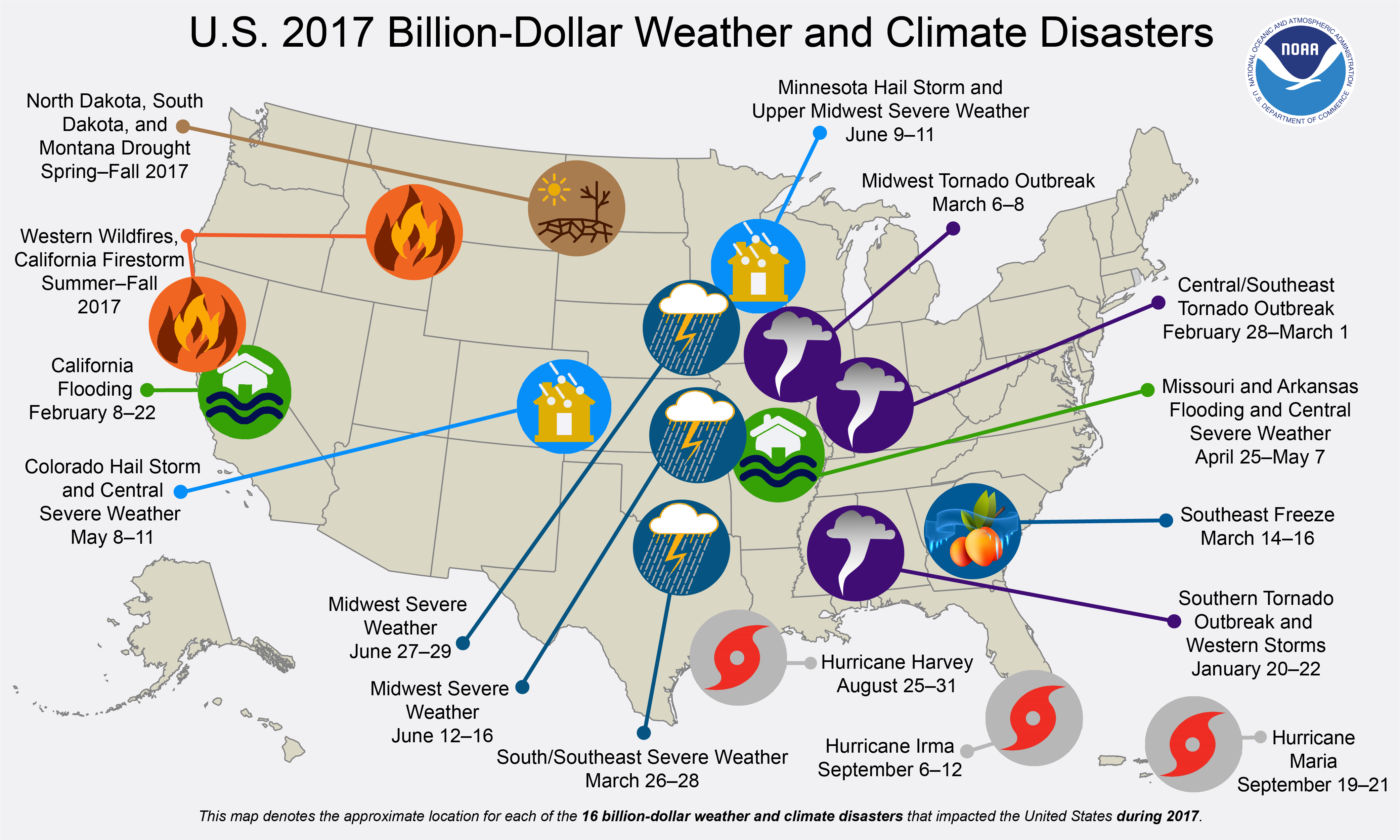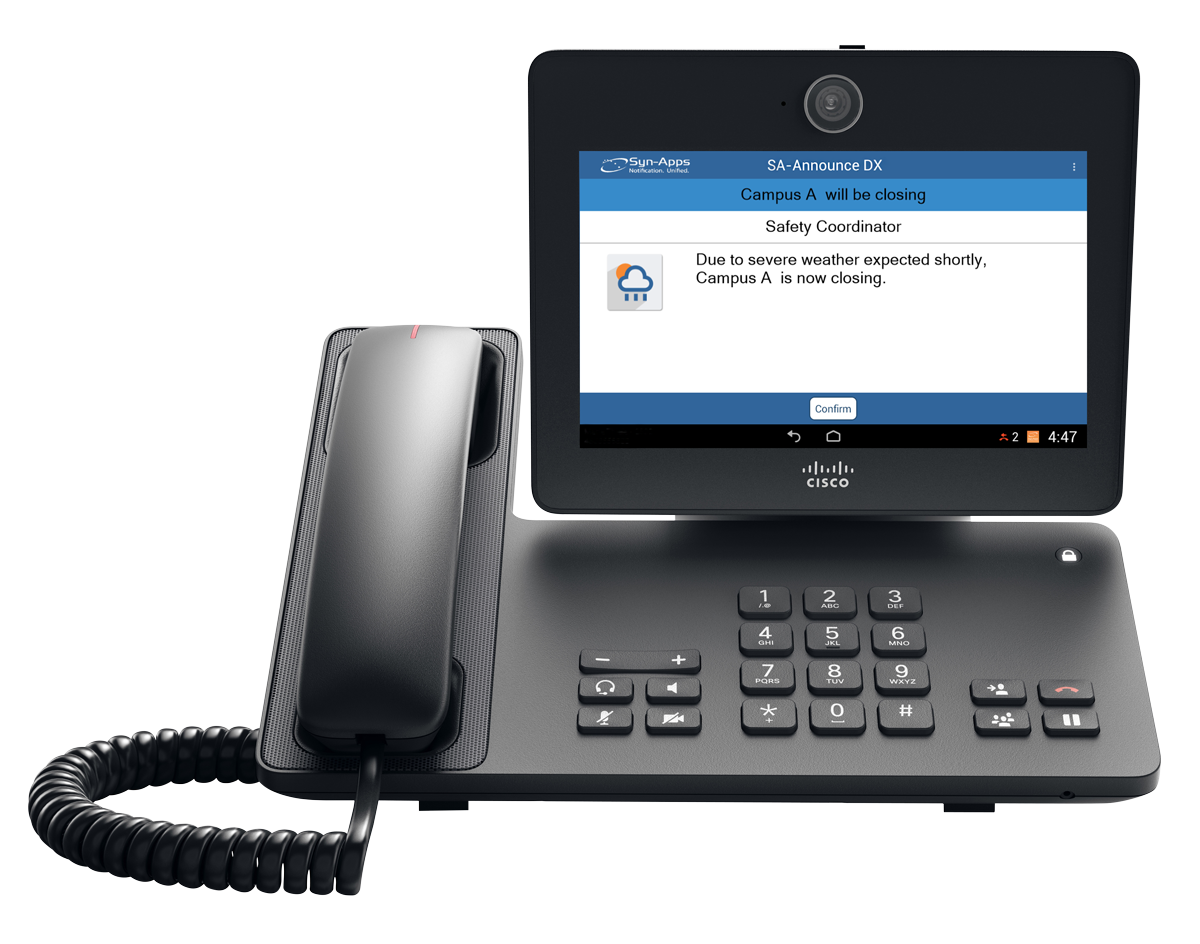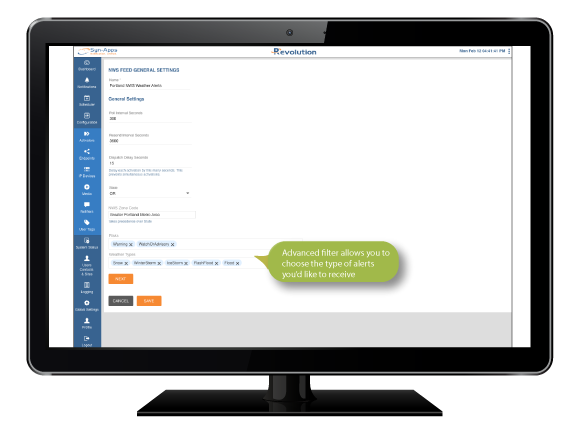Preparing for Severe Weather
The National Oceanic and Atmospheric Administration (NOAA) estimates that 2017’s historic severe weather and climate disasters — which included a drought, devastating hurricanes, and catastrophic wildfires — cost more than 16 billion dollars. Of greater importance though, was the toll it took on families and communities across the U.S. More than 300 lives were lost and many more were injured during these extreme weather catastrophes. If the extremities of 2017 have taught us anything, it’s that severe weather can strike at any moment and result in a tremendous loss. When severe weather strikes, every second counts. All organizations should have a strategic, well-tested emergency communication plan in place for severe weather. This article provides tips on how you can improve your emergency weather strategy by leveraging technology to optimize your communication processes to protect your people and assets.
If the extremities of 2017 have taught us anything, it’s that severe weather can strike at any moment and result in a tremendous loss. When severe weather strikes, every second counts. All organizations should have a strategic, well-tested emergency communication plan in place for severe weather. This article provides tips on how you can improve your emergency weather strategy by leveraging technology to optimize your communication processes to protect your people and assets.
Know the Terminology
To begin, make sure your team understands the different types of alerts issued by the National Weather Service (NWS) and NOAA. Typically, they send watches, advisories, and warning alerts.- A “watch” is sent when weather conditions are favorable for a specific type of event, such as a tornado or flooding. For example, a tornado watch would mean that a severe thunderstorm and tornadoes are possible. It does not mean a tornado will occur.
- An “advisory” typically means a weather event is imminent but is not a severe event. For example, a winter weather advisory would be issued for 2–4 inches of snow in most areas. This is a notable occurrence, but not likely to cause long-term issues for most business and organizations.
- A “warning” is issued when a severe weather event is imminent. A blizzard warning, for instance, means that a severe snowstorm is expected within the next 12–18 hours.
Decide Who Should Receive Weather Notifications
If you haven’t already, determine who has decision-making authority within your organization. Depending on the weather condition, you should then decide who needs to be informed and how they should proceed. For example, you may decide that watches should go to executive team members and the facilities crew so they’re aware of the forecast conditions and are prepared to make contingency plans in case the forecast worsens. You may choose to send advisories to all supervisors on premises, as the weather event is imminent and may require people to leave earlier than usual. You may choose to send warnings to all personnel, as they are for imminent and potentially severe weather events, requiring people to seek shelter or prepare. Some situations, such as hurricanes or severe winter weather, often requires management to determine if and when to close the facility or make arrangements for people to stay at home.
Leverage Technology to Monitor Weather Forecasts & Optimize Your Communication Plan
Next, determine how your organization will monitor and distribute information to the appropriate stakeholder(s). Most distributed recipient mass notification systems can send secondary notifications like e-mails or texts, but only advanced emergency mass notification systems are equipped to provide immediate and intrusive audio/visual alerts required to meet NFPA (National Fire Protection Authority) standards. It’s important to understand how they differ when evaluating emergency mass notification vendors. Providing ample notice can save lives and automating weather alerts can provide the timely, effective information that people need – without requiring one-off communications. Look for an emergency notification system that’s CAP-compliant and IPAWS-EAS verified, as these systems allow you to integrate with trusted sources, such as NWS/NOAA weather feeds. As the weather event develops, of course, you may want to add more personal and specific information, based on your communication plan. Most advanced notification systems allow users to integrate with third-party services and customize their notifications preferences. For example, Syn-Apps’ Revolution emergency mass notification system integrates with NWS (National Weather Service) / NOAA weather feeds to automatically receive alerts and rapidly relay the information to people. With Revolution, users can set their geographic area, select alert levels (watches, warnings, or advisories), and the type of weather events they care to receive.
Use Multimodal Notifications to Extend Your Communication Reach
Next, determine how to communicate weather information to your stakeholders and the communication methods that resonate most effectively with your audience. Multimodal communication is important, as it widens the probability recipients will receive and acknowledge your notification. Combining intrusive audio/visual alerts, or primary EMNS (Emergency Mass Notification System) alerts, with secondary distributed alerts like SMS and e-mail alerts may require different content due to factors like character limitations and audio capabilities. Try to keep messaging consistent while still maintaining within the parameters of the specific the communication tool. Advanced systems typically allow users to customize alerts so stakeholders receive a cohesive message from your organization. This helps establish trust and credibility with your recipients because they know the information they’re receiving is truly coming from your organization.Last, But Not Least – Test Your Systems & Conduct Drills
Conducting routine drills can help familiarize existing procedures and acquaints new ones to ensure your personnel understands what to do in the event of a real weather emergency. They’re also helpful to identify process and system inefficiencies; arming leadership teams with the valuable insight necessary to fix any issues before a real emergency were to occur. Remember, taking a proactive approach by testing your systems and conducting routine drills can save lives during a weather emergency. |
Tech Tip: Use a scheduling tool to plan drills in advance so you can spend more time practicing and perfecting your emergency processes. Watch this short video to learn how Revolution’s Scheduler can be used to manage recurring events, such as monthly weather drills. |
